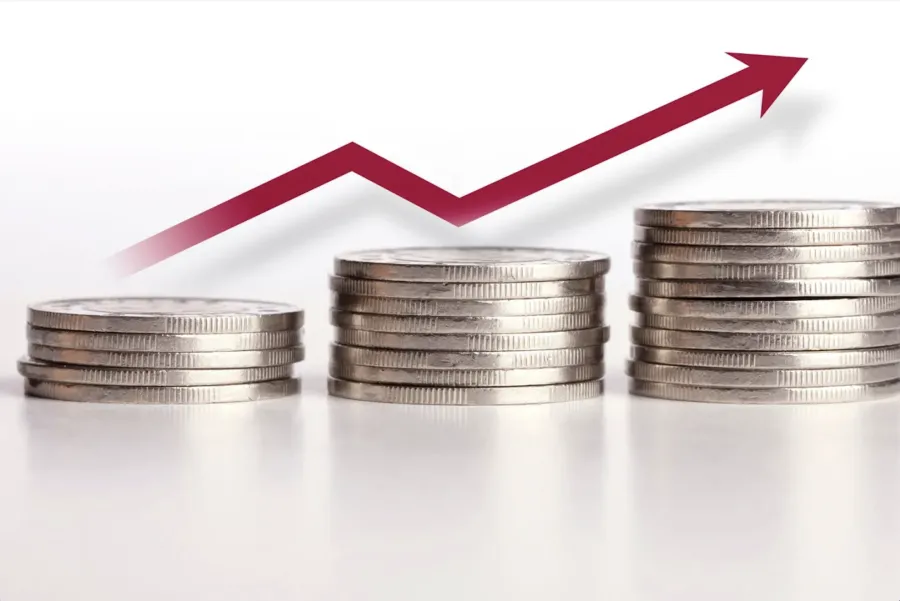“What’s Causing Inflation?” It Ain’t Workers’ Wages

With sky-high gas prices and the costs of consumer goods rising, inflation is a hot topic and unfortunately corporations love to turn the blame on their favorite target: workers. But what is really causing inflation? Longtime labor educator Mike Prokosch gave a very informative presentation on the root causes of inflation and what to do about at our COPE Convention last week.
First, increasing wages is not causing inflation. As Prokosch noted, from April 2021 to April 2022, inflation went up almost twice as much as wages—8.3 percent vs 4.3 percent.
“Put another way: since mid-2020, overall prices in the non-financial sector – companies that actually make goods or provide services – have risen at 6.1 percent per year,” he said. “Over half these price hikes come from fatter profit margins. Less than 8 percent come from labor costs.”
He noted that the “wages are driving inflation” taking point is being pushed by economist Larry Summers, who recently said that if we want to stop inflation we’ll need five years of a 5 percent unemployment rate. However, that’s a major deflection from the much larger factors: supply chain bottlenecks and increased corporate profits.
Corporate profits jumped 25 percent in 2021, the highest rate in at least 45 years. Wealthy investors are making a killing by bidding up oil prices and taking advantage of a lack of refinery capacity.
“$4 billion of Shell Oil’s $55 billion profits in 2021 came from futures trading,” Oil company profits rose more than 300 percent from the last quarter of 2021 to the first quarter this year,” said Prokosch. “The increase in oil company profits was equal to more than a quarter (28 percent) of the cost of gas that consumers paid in the first three months of this year.”
But oil companies aren’t the only ones making eye popping levels of profits off this crisis. During the pandemic, Amazon tycoon Jeff Bezos’ fortune grew from $113 billion to $150 billion, Elon Musk’s earnings jumped from $25 billion to $225 billion, the three Walmart heirs went from from $163.1 billion to $207.7 billion. In total, Prokosch said, the wealth of US billionaires rose $1.7 trillion, an increase of nearly 60 percent.
The War in Ukraine, a shutdown in China due to COVID and a lack of corporate investment into supply chain infrastructure are also causing consumer prices to spike. Prokosch said the global supply chain is stretched thin that any disruption can cause snarls. Part of the problem is “just-in-time” distribution systems meant to cut costs.
"Maintaining warehouses and stocking them with parts or products costs money. So profit-hungry corporations have eliminated them. Instead, they rely on the transportation system (from container ships to truckers) to get them parts and products – just in time,” he said.
He described today’s warehouses as on the road and on the ocean, so when a ship gets stuck, like the massive container ship that blocked the Suez Canal for six days in 2021, or a truck goes off the road, it causes major supply chain disruptions.
“Globalization and just-in-time distribution networks are like understaffing your workplace,” said Prokosch. “Corporations pay out as little as they can and stretch the capacity of the system to the limit in normal times. When something goes wrong, the system can’t handle it. There’s no extra capacity to step in and pick up the load.”
While wars and pandemics will happen, there is plenty we can do to ensure working people are protected from massive price shocks that limit our ability to get to work, heat our homes and provide for our families. It’s clear we must tax the super wealthy profiteers who are taking advantage of this crisis, demand that oil companies are accountable to the people, re-regulate trucking, break up corporate monopolies, renegotiate trade agreements and rebuild our manufacturing base so more goods are made here in America. To make that happen we will need to continue to build more power in our movement and collectively demand it.
For more information about inflation, what’s driving it and what to do about, read Mike’s presentation on our website.
